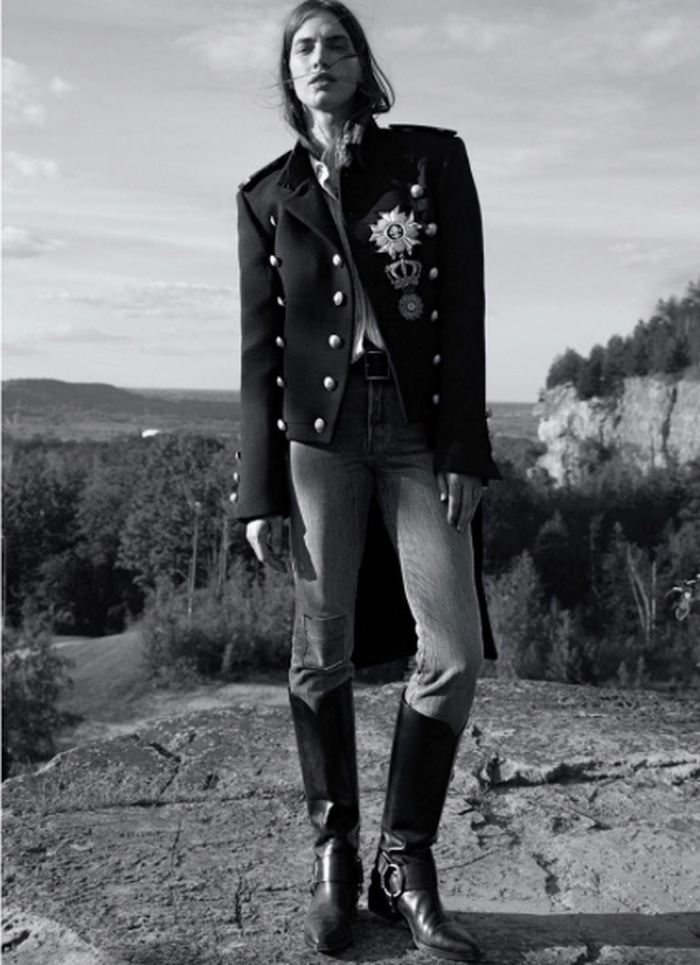Why is female body hair still revolutionary?
Columnist Vivienne Hopley-Jones breaks down Adidas’s latest campaign which sparked uproar after featuring a model with unshaven leg hair
“I can’t believe I still have to protest this fucking shit” was the quote brandished in the viral image shared on social media of one of many women in Poland protesting proposed strict laws surrounding abortion in October 2016, a sentiment that resonated worldwide with the still-fresh election of businessman-turned-politician Donald Trump. This phrase has become a watchword for feminism more generally; it perfectly sums up the constant barriers, both obvious and subtle, women are still faced with daily.
“It is deeply depressing that the image of a female with body hair is seen as so revolutionary in modern society”
From women’s rights to the everyday sexism which is embedded in our culture, it can often feel that with every Doc Marten-clad foot forward, there’s yet another old white man to push you ten steps back. The response to Adidas’s latest ‘Superstar’ campaign is yet another addition to the tirelessly amassing contemporary cases of the disrespect and misunderstanding of women enmeshed in our society.
Adidas’ latest marketing venture focuses on inclusivity, featuring a variety of artists and influencers who challenge societal norms in various ways through sexuality, body image, and gender stereotypes and boundaries. And yet, the denotation SBNS (shocked but not surprised), which I have frequently borrowed from Liberty’s ex-director Shami Chakrabarti, especially in the tumultuous political climate of recent years, is an alarmingly apt description to my general feelings about the reaction one particular model from Adidas’s footwear campaign has received.
The image which has garnered the most attention is that of 26-year-old Swedish artist, Arvida Byström. Petite, white and blonde, Byström is the archetypal ‘female’ that social media loves, which is what makes the campaign shot more emphatic. With a short blonde bob and a reminiscently Austen-esque lacy dress, Byström is powerful and remarkably ‘unfeminine’; her power stance not only reveals the Adidas originals, but more controversially to the mass of public opinion, her hair-covered legs.
Byström received a torrent of hate, ranging from woefully uneducated comments of “disgusting” and “unhygienic”, to Byström’s account of receiving personal rape threats. Comments on Adidas’s YouTube video included “there should be no reason to be proud for being disgusting” and the model was accused of “rejecting all modern definitions of beauty and hygiene”. Whilst Adidas and Byström have also received much love and admiration for this stance in the face of such gender-based hatred, it is deeply depressing that the image of a female with body hair is seen as so revolutionary in modern society.
Some have argued that Adidas are commercialising the current social climate with its focus on the fluctuation of boundaries of sex and gender, yet I think that it can be superficial to discredit brands on such reasons. Big names like Adidas have the power to both reflect and influence the society they are part of, and let’s be honest, I’d much rather have them use their muscular advertising prowess to promote progressive and inclusive ideas than to reaffirm current stereotypes surrounding gender. Is it not naive to reject a brand’s power socially in fear of it ‘corrupting’ the original message?

Uniform in fashion: uniting or oppressive?
In a post on Instagram, the ever-political Byström added to the conversation in her acknowledgment of herself as “such an abled, white, cis body with its only nonconforming feature being a lil leg hair”, recognising how much harder it is for individuals who “do not possess all these privileges”. To some extent, it is Byström’s inherent femininity that I think is the root of the aggressive reaction.
Feminists are still stereotypically seen as ugly man-haters, but for this young woman, who looks like everything society wants, to reject and play with gender so absolutely, that it in itself seems forbidden. It is one thing for a woman who society already considers outside of the normative image to have body hair, but there must be a choice; a choice between femininity and masculinity, ‘girlishness’ and strength, intelligence and beauty. Anything beyond this still seems too much for the binary-minded patriarchy to take
 Comment / Cambridge students are too opinionated 21 April 2025
Comment / Cambridge students are too opinionated 21 April 2025 Interviews / Meet the Chaplain who’s working to make Cambridge a university of sanctuary for refugees20 April 2025
Interviews / Meet the Chaplain who’s working to make Cambridge a university of sanctuary for refugees20 April 2025 News / News in brief: campaigning and drinking20 April 2025
News / News in brief: campaigning and drinking20 April 2025 Comment / Cambridge’s tourism risks commodifying students18 April 2025
Comment / Cambridge’s tourism risks commodifying students18 April 2025 Comment / Cambridge’s gossip culture is a double-edged sword7 April 2025
Comment / Cambridge’s gossip culture is a double-edged sword7 April 2025






